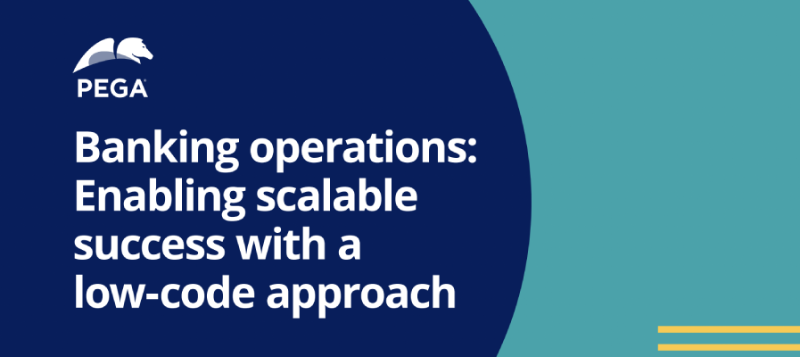Scalable Success Using A Low-Code Approach In Banking
Published on 08 Jan 2022

Banks all around the world are increasingly focused on providing best-in-class, personalized services that foster long-term trust, growth, and success. Banks, on the other hand, are unable to achieve customer and client expectations due to old legacy systems, siloed teams, and insufficient data quality control. Commercial banks, in particular, are grappling with a plethora of systems that do not communicate with one another and must be upgraded individually.
See also: A Roadmap to SASE for Better Network Security
The Most Significant Obstacles In Banking Operations
Key challenges with banking operations across the board include:
- Adjusting to the new remote and distributed workforce
- The inability to quickly reprioritize and reallocate work at any given time
- Providing the appropriate solutions and channels based on customer- and client-specific needs
As a result, many banks are failing to provide regular services in a timely manner, such as loan application processing or offering customized services and programs based on your clients' or customers' individual demands. For commercial banks, this means that their usual white-glove service is becoming increasingly difficult to maintain. Retail banks, on the other hand, must efficiently knit together the numerous operational demands of the client lifecycle — without clogging up IT with each new request.
Finally, banking operations teams are straining to meet the business's time-sensitive needs.
Banks require a low-code solution to implement modernized, robust, and strategic business operations that can support distributed teams, adjust to shifting market conditions, and seamlessly reallocate work and resources based on changing demands in order to overcome these challenges and establish long-term customer/client relationships.
Banks That Use Agile Delivery Methods
Several characteristics are shared by banks that successfully supply a cost-effective, agile servicing backbone:
- They construct their processes with customers/clients in mind, with built-in evidentiary controls and data gathered throughout the process.
- They create lean, industrialized processes out of modular, universal components to encourage reuse and standardization, all while fostering a culture of continual improvement.
- They have high-performing operational teams that are empowered by strong leadership and sponsorship.
Download to read the full whitepaper by Pega to learn all about scaling your banking operations successfully using a low-code approach.
